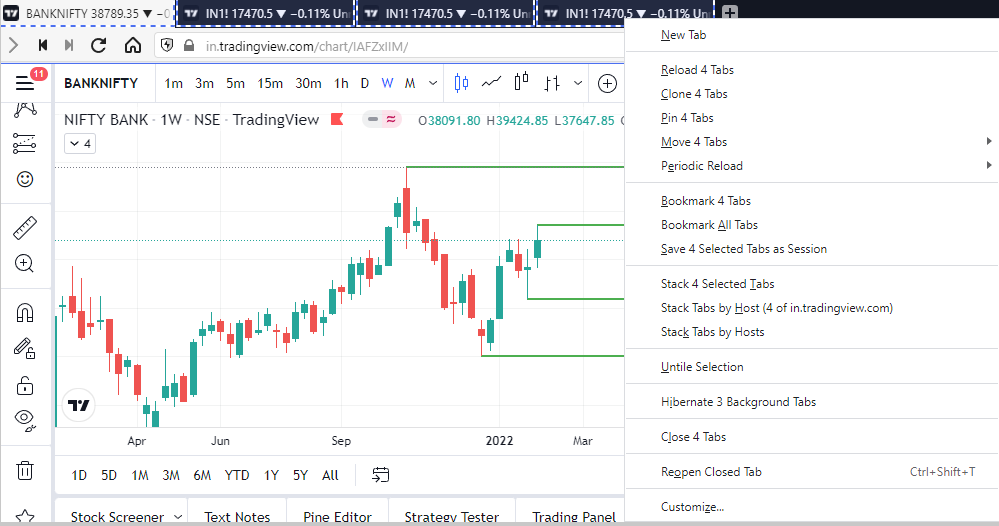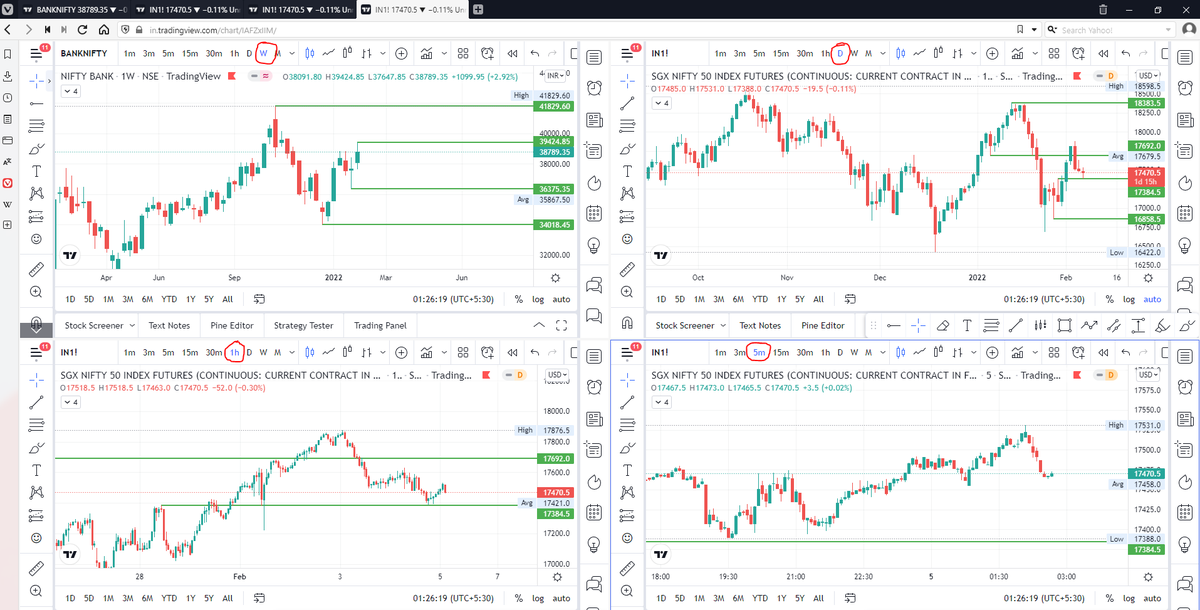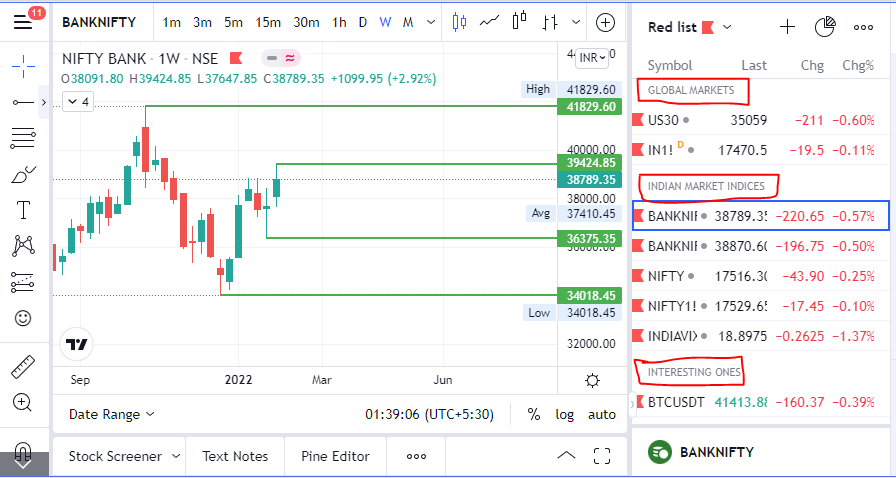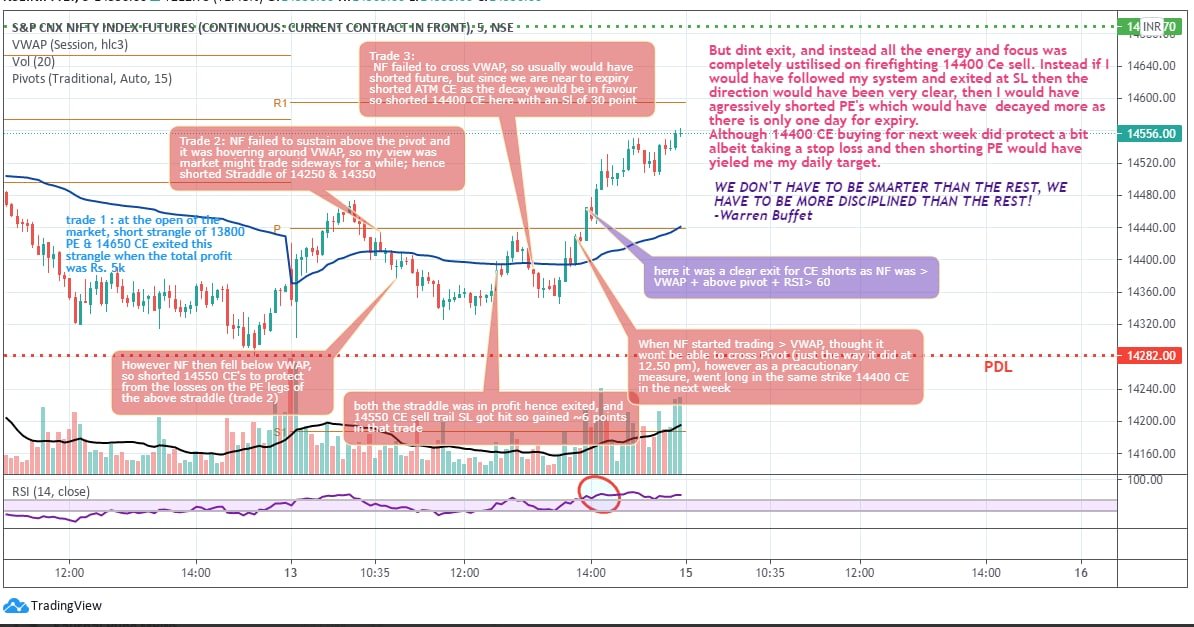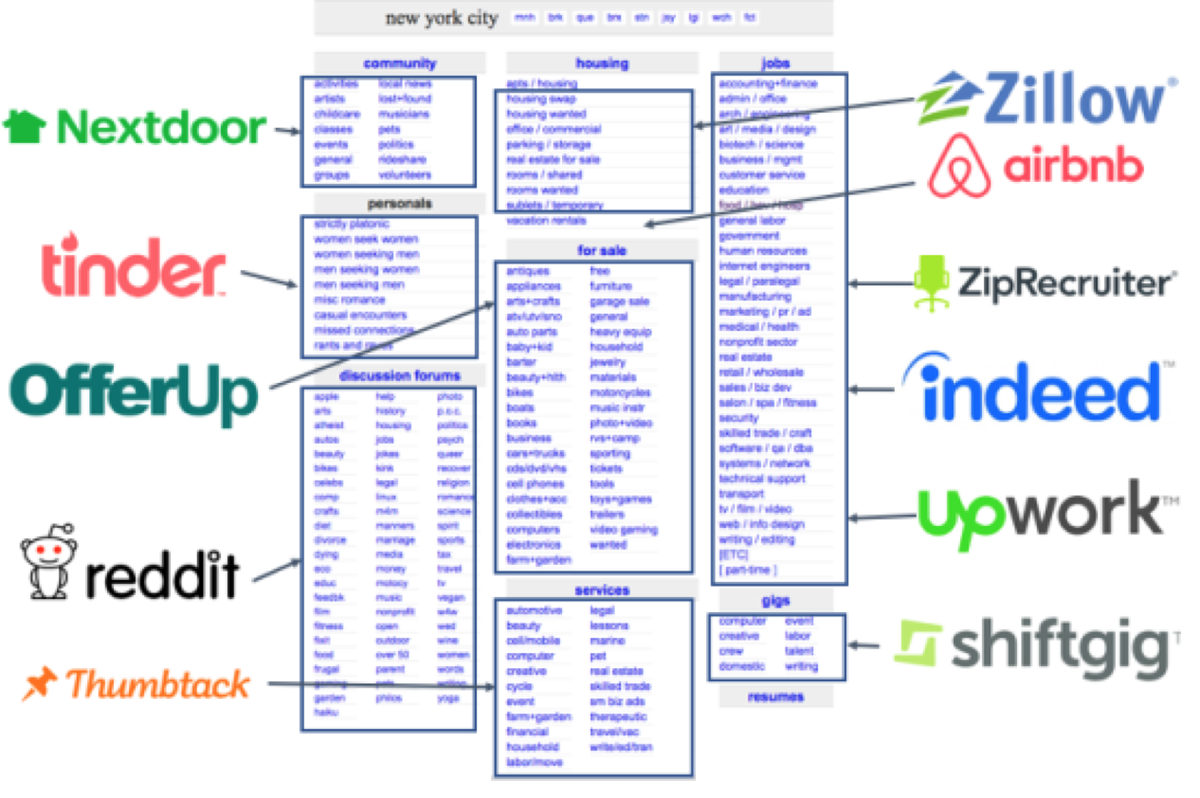0/ Who is this for?
This will greatly benefit people who freeze when it comes to managing their trades and keep booking losses.
Some trade with too much fear as well when things go wrong.
Knowing these adjustments will give you the confidence to try to manage your trades.
Most of them are to lower risk on the side the market is going in.
Some adjustments even increase the profit potential and probabilities of the trade being in profit on expiry.
Let's begin by having a look at the adjustments.
Here is the adjustment number 1 below.
1/ Don't do anything till your breakeven arrives
One reason these strategies go wrong far too quickly is due to adjusting them too frequently.
You can escape most adjustments if you simply wait for the market to arrive at your breakeven.
This will work well in monthly options.
2/ Remove Risk from Untested Side
If you've taken an iron fly and the market has gone up you can shift your put buy upwards and lock the downside risk to potentially zero.
This way you've secured one side and just need to manage the bleeding side.
3. Roll your put credit spread upwards
If the market is going up and your put options are giving you profits, roll them up to extract more theta.
This will increase your downside risk but the upside risk will be lowered which is what we want.
4. Sell extra puts (if market goes up)
You want the market to come down, if it doesn't come down we want to make some extra money.
So can sell puts options of the lower breakeven of the fly.
In most cases, this will eliminate the upside risk.
If the market goes up, no worry.
5. Square off buy legs and bring the buy legs closer to the sell ones (To make it risk free)
When in profit your first aim should be to eliminate the max loss completely.
This way you can play for a potential jackpot as well if it expires in the center.
6. Use technicals
If good with technicals you'll be able to wait for important levels to be taken out.
If that happens then you can even change your bias toward the trade.
You'll be better off than non-directional traders as a result if you don't adjust and market reverses.
7. No change
Sometimes the best thing to do is just stick to your initial view and not do anything.
Markets are designed to kick out the normal straddle/strangle traders by hitting their stop losss and then coming back to their original range.
At the beginning of the trade, we already know the max loss in case things go wrong.
If you're okay with the loss, can just leave the trade till expiry and check if your view was right or not.
R:R is pretty good in iron flies.
8. Don't roll up too much on one side (Caution)
Your risk will go up even more than what you originally thought the risk you were taking.
While rolling up your puts in a bullish market, if the market reverses it will be tough to manage in case of a fast downmove.
Advice:
Don't do it with your full capital until you get the hang of it.
Commit to at least 3-6 months of experience before you start doing this with a decent capital size.
Most people cannot handle the mtm swings which is due to deploying a large amount of capital.
We think these adjustments can help you get out of most of the tricky situations.
We also wrote a thread for beginners to understand the iron fly strategy.
Here it is.
https://t.co/wzjuORRdKn
If you found this useful, hit the like button and retweet the thread.
Follow to never miss them.
See past threads here:
@AdityaTodmal &
@niki_poojary

